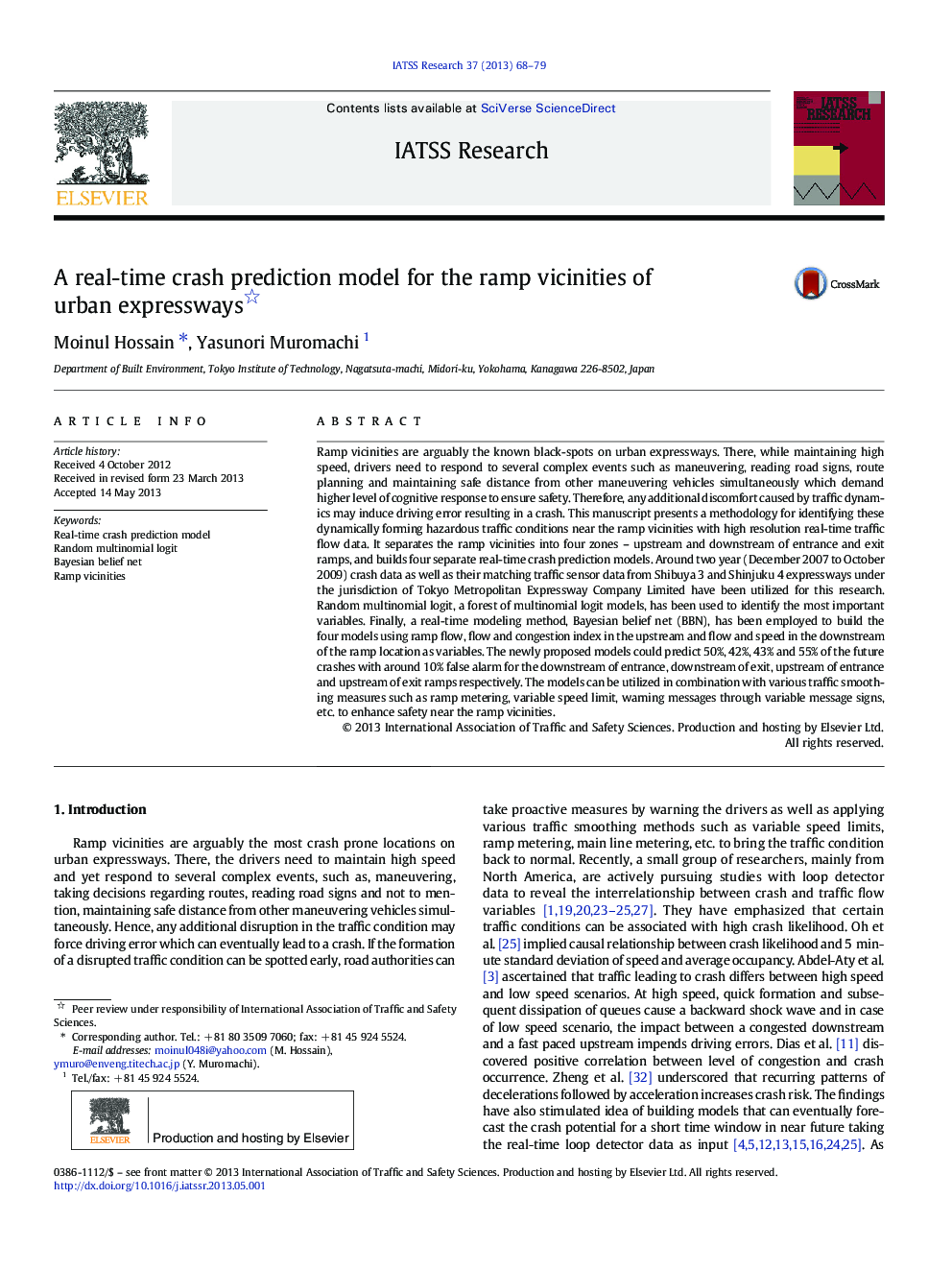| کد مقاله | کد نشریه | سال انتشار | مقاله انگلیسی | نسخه تمام متن |
|---|---|---|---|---|
| 1104653 | 954142 | 2013 | 12 صفحه PDF | دانلود رایگان |
• Separate real-time crash prediction models for different ramp vicinities
• Variables: ramp flow; upstream — flow, congestion index; downstream — flow, speed
• Method: random multinomial logit (variable selection), Bayesian belief net (model)
• Performance: around 50% crash detection rate with only around 10% false alarm
Ramp vicinities are arguably the known black-spots on urban expressways. There, while maintaining high speed, drivers need to respond to several complex events such as maneuvering, reading road signs, route planning and maintaining safe distance from other maneuvering vehicles simultaneously which demand higher level of cognitive response to ensure safety. Therefore, any additional discomfort caused by traffic dynamics may induce driving error resulting in a crash. This manuscript presents a methodology for identifying these dynamically forming hazardous traffic conditions near the ramp vicinities with high resolution real-time traffic flow data. It separates the ramp vicinities into four zones – upstream and downstream of entrance and exit ramps, and builds four separate real-time crash prediction models. Around two year (December 2007 to October 2009) crash data as well as their matching traffic sensor data from Shibuya 3 and Shinjuku 4 expressways under the jurisdiction of Tokyo Metropolitan Expressway Company Limited have been utilized for this research. Random multinomial logit, a forest of multinomial logit models, has been used to identify the most important variables. Finally, a real-time modeling method, Bayesian belief net (BBN), has been employed to build the four models using ramp flow, flow and congestion index in the upstream and flow and speed in the downstream of the ramp location as variables. The newly proposed models could predict 50%, 42%, 43% and 55% of the future crashes with around 10% false alarm for the downstream of entrance, downstream of exit, upstream of entrance and upstream of exit ramps respectively. The models can be utilized in combination with various traffic smoothing measures such as ramp metering, variable speed limit, warning messages through variable message signs, etc. to enhance safety near the ramp vicinities.
Journal: IATSS Research - Volume 37, Issue 1, July 2013, Pages 68–79
